Interview
A Remote PlaceFor Existential Discovery
In an archipelago in the middle of the Atlantic Ocean, an artistic laboratory unfolds at the crossroads between technology and environment. The name is Re_act Contemporary, a project founded in 2017 by Paulo Arraiano and Paulo Ávila Sousa, who annually invites curators worldwide to team up with artists to research and explore the paradigm of a specific place lost in space and time. By entering ‘neutral’ territory, the artists and curators get access to a visual and conceptual playground that allows a new sensory contemplation to take place. We spoke to Paulo Arraiano, co-founder of Re_act Contemporary about the project and the vision to create a remote space for curators and artists to explore and raise questions about a new fast-paced, digital reality that fundamentally alters human perception.

"The continuous influence of our own accelerated pace propagates in a new paradigm of new media and digital realities that alters our perception of time, space and reality, in contrast to the availability of sensory contemplation."
Can you tell us about the history of Re_act Contemporary and your vision for the project?
The project started a few years ago when I went to the Azores Islands to give a Conference and met with Paulo Ávila Sousa, an artist based in the archipelago, who had already former experience in programming different culture related projects in the Islands. We started a smaller version of the project and invited other artist friends to test-drive what later turned into Re_act Contemporary. Re_act was officially co-founded in 2017 and had then its first public edition with a laboratory residence program focused on contemporary art with a final presentation at MAH Museum in Terceira Island.
Based on former experiences from residences, museums, galleries, art fairs, artist run spaces and studios, we were aware that the contemporary art context mostly takes place in major cities and metropolis and is strongly related to the urban scape. This influences artists, curators, gallerists, and museums, who are mainly located in this urban context, thus creating a major footprint on the production itself.
Also, in the fast-paced frenzy that drives our contemporary societies, where thoughts and impulses are beamed by way of artificial communication and express the paramount need to scroll through the snippets of information that make up the latest trends, the current post-digital, new-media generation is faced with the unprecedented shift from direct life experience to an artificial way of connecting/disconnecting with the natural/analogical world. The continuous influence of our own accelerated pace propagates in a new paradigm of new media and digital realities that alters our perception of time, space and reality, in contrast to the availability of sensory contemplation. In this context and within what some may call the Anthropocene [a proposed epoch dating from the commencement of significant human impact on the Earth’s geology and ecosystems, including, but not limited to, anthropogenic climate change] makes us living a very specific moment in time with enormous social, political and anthropological changes where continents are growing apart and our existence, sustainability and ecology are at stake.
Based on this paradigm, this laboratory works as neutral territory, a ‘matrix’ in the middle of the Atlantic Ocean, inviting individuals from different continents with a curatorial approach focusing on artists working at the crossroads between technology and environment. We believe they could benefit from the opportunity to research geographically remote and volcanic archipelagos, exploring the paradigm of being in a different layer by entering a specific place lost in space and time in relation to the referred social contemporary scenario.
Re_act Contemporary is located in the Azores Islands in the North mid-Atlantic Ocean. Can you elaborate on the interplay between the programme for Re_act Contemporary and the unique environment in which it is staged?
Within this specific territory [an archipelago in the middle of the Atlantic Ocean, connected to the idea of Atlantis, described by Plato] is created a “matrix” where the artists explore notions of ecology, myth and technology taking advantage of its unique location. The resident artists work in a dialogue between matter/non-matter and in permanent laboratory in an apparently neutral territory for exploration and co-relations between different layers of reality and post-reality. Taking the form of a laboratory accompanied by artistic processes and curatorial experimentation, the artists and curators will be invited to begin or develop ideas, and the results of this process will be presented in an institutional context.
Re_act’s residence space is based in Angra do Heroismo, situated on one of the 9 islands in the Azores archipelago. This was an obligatory port of call from the 15th century until the advent of the steamship in the 19th century, being a distinctive example of the adaptation of an urban model to particular climatic conditions and nowadays UNESCO heritage. Between this controlled scenario and its natural landscape [hills, tropical landscape, volcanos, natural pools and specific flora], the artists can also travel by boat within the archipelago, having contact with whales, dolphins, mantas and other animals as well as completely different geographical realities between the islands.
Therefore, in this particular context, the resident artists experience a visual and conceptual playground that contrasts with the normal urban paradigm of major cities where the loss of sensorial reference and contemplation is increasingly contributing to distance human beings from the elements of the natural world where the pictorial tradition of landscape no longer seems apt to capture the intricate web of new significations emerging from cityscapes in the age of the global city. Also, and with the help of registration, new media and technology create dialogue with the landscape with minimal “carbon footprint” instead of adding something to it.

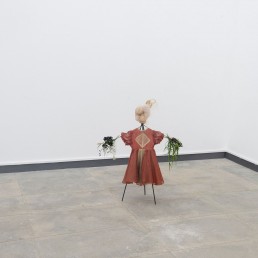
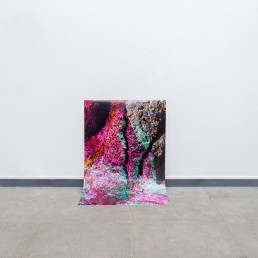
To “react” is a response to something, in many cases a counteraction. Which significance does the word “Re_act” have in the context of Re_act Contemporary?
Contemporary Art works here as a visual seismograph, measuring the waves of the social and natural paradigm in this volcanic islands. The laboratory works itself as geographical acupuncture in a specific place in the planet and the artists act as cells of this living organism, creating an inflammation by raising visual and conceptual questions within their body of work.
Can you give us some insight into the curatorial approach? What are you looking for when deciding on an artist to join the residency?
Normally, Re_act works directly in dialogue with the curators or curatorial platforms, which normally work together presenting a co-curatorial project and artist selection. We also invite curators from different continents or who are working with artists from different continents which will physically meet in the archipelago in centre of the Atlantic to experience this residence and create a dialogue with the surroundings and between themselves, thus promoting cultural, social, political and conceptual exchange. During the laboratory, the curators are residents themselves, taking part of the entire process by woking together and in permanent dialogue with the artists in a very organic process.
"As a playground for atoms and molecules, the body as well as the landscape will transform with the presence of superintelligence into a new physical and even spiritual paradigm"
The 2019 edition will be co-curated by Irene Campolmi and Àngels Miralda. Can you tell us about this collaboration and how it came into being?
During the 2017 edition of Art Rotterdam, I was presenting my work with “Hawaii-Lisbon” and personally met both Àngels Miralda and Irene Campolmi during the fair. They are both independent curators whom I truly respect for their fresh and eclectic curatorial approach. Also, they have both individually been working with projects and artists between Europe and other continents (Portugal, Spain, Italy, Uk, Denmark, Germany; Romania, Latvia, Chile; Brazil) with curatorial contents related to body, landscape, natural, artificial, post-internet, VR, new realities, and several ideas which are immensely connected with our residency program. Later on, Irene Campolmi came to Lisbon for a conference at MAAT Museum in the context of Eco-Visionaries: Art and Architecture after the Anthropocene Exhibition curated by Pedro Gadanho and Mariana Pestana which was naturally related, so it was very natural and organic they way things developed. We also met later with Ángels Miralda in Lisbon on occasion of the ARCO Lisbon Art Fair and everything developed from there.
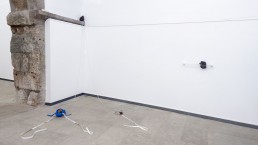
A quote from your vision statement reads:“In a context of transformation of human perception influenced by the digital innovations of our society, a dialogue is created between the post-digital era and the organic essence of our natural being, immersed in an electronic environment.” How do you seek to create this dialogue and how does it unfold on a remote island “lost in space and time in relation to the social contemporary scenario”?
In the contemporary urban context, swiping reality, scrolling trough daily life, we are experiencing an age of technologic and biologic exponential change and a new sensorial revolution. Supercomputers, which we now call smartphones, are used by most individuals in major cities as external prosthesis that guide us and control our daily existence. This leads us into a techno-dematerialisation lifestyle that will – or will not – integrate the physical body in the future.
As a playground for atoms and molecules, the body as well as the landscape will transform with the presence of superintelligence into a new physical and even spiritual paradigm. With the possibility of an existence of new hybrid species or biological based machines recording and sending memories or sensations using every day cognitive augmented intelligence, we may arrive to a place where we shall decide what is a machine and what is a human.
In this remote Island, time and technology, although present, work in a different level in the strong presence of nature and landscape that connect us directly to our biological relation with our physical and human body.
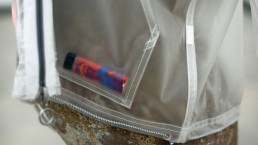
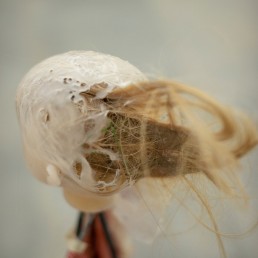

The 2019 edition of Re_act Contemporary will take place in September 2019. Can you unveil a bit of what the visitors can expect?
With the co-curatorial approach from Àngels Miralda and Irene Campolmi and with the collaboration with MAH Museum, the next years edition will continue to develop issues between technology and ecology in contemporary art while delving further into the importance of the island’s geographical location as a strategic point in Atlantic history. It will also investigate aspects and issues of the many ecologies that co-exist in the geographical context of an island and, in a broader sense, of an archipelago. Aspects such as technology politics, de-colonial thought and society are looked upon through the eyes of contemporary artists, who will take as their point of departure the importance of the island’s geographical location in the history of the Atlantic.
Profile
Re_act Contemporary
Opening Year
2017
Founders
Paulo Arraiano and Paulo Ávila Sousa
Website
reactcontemporary.com